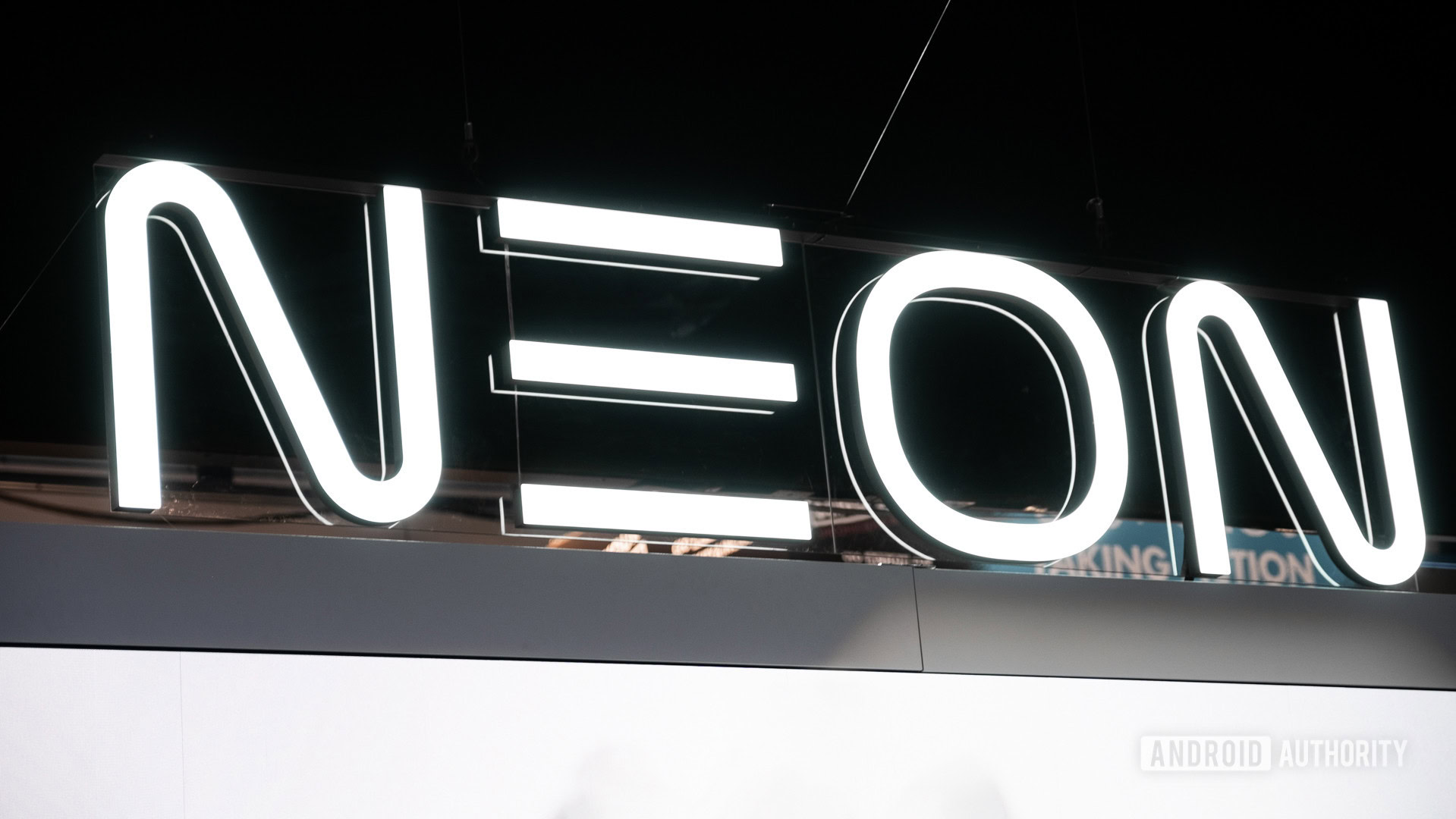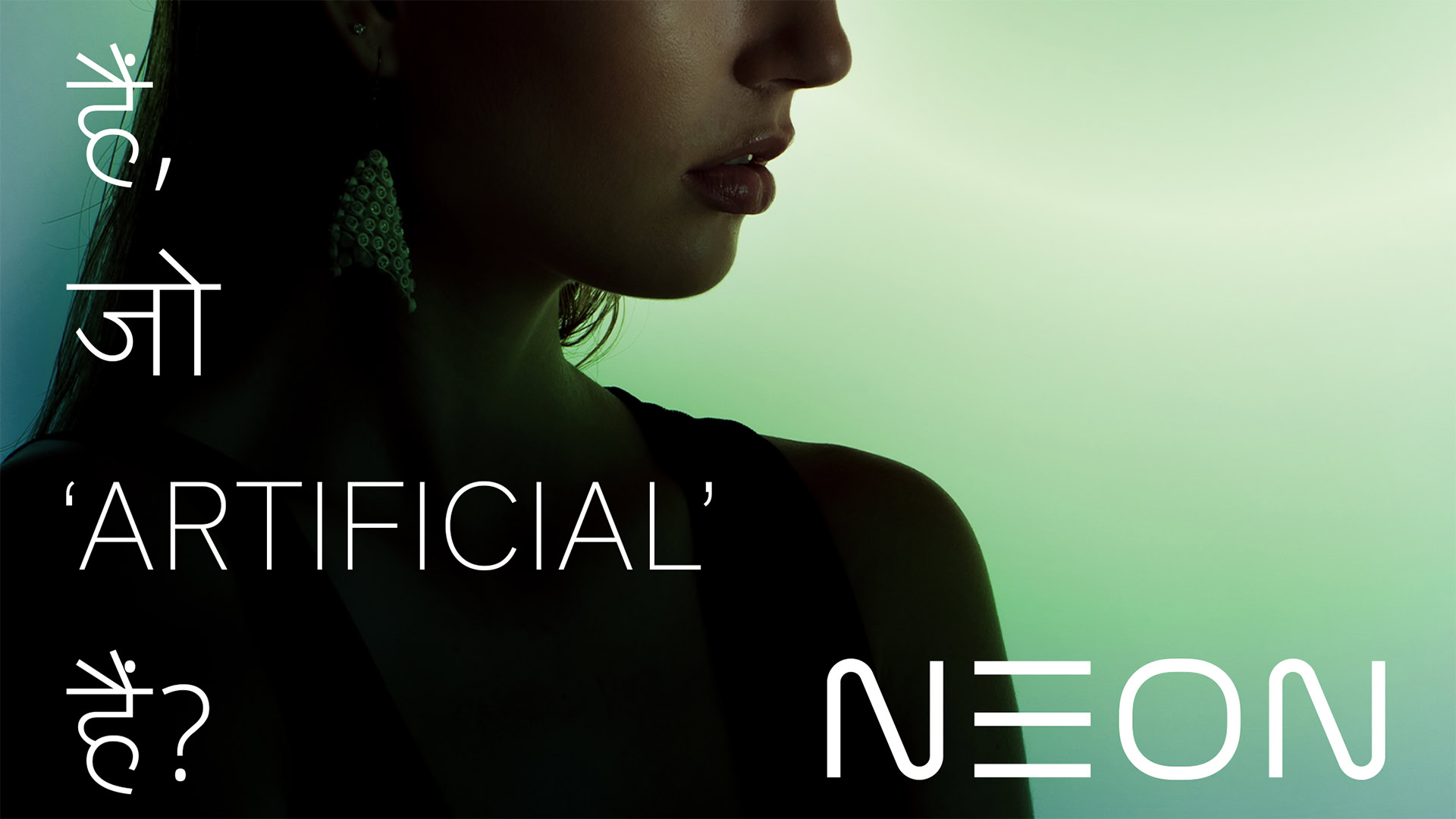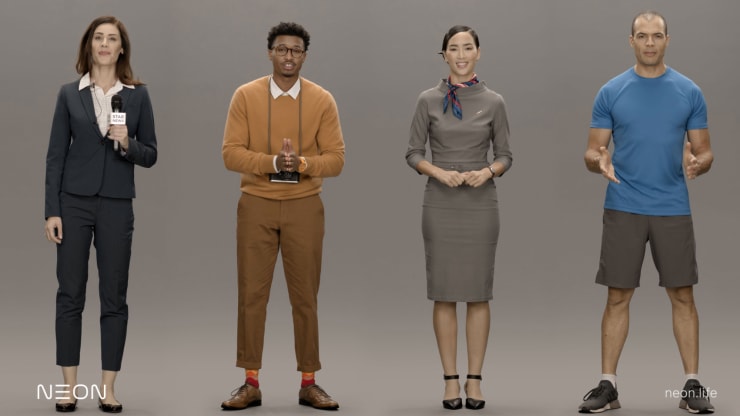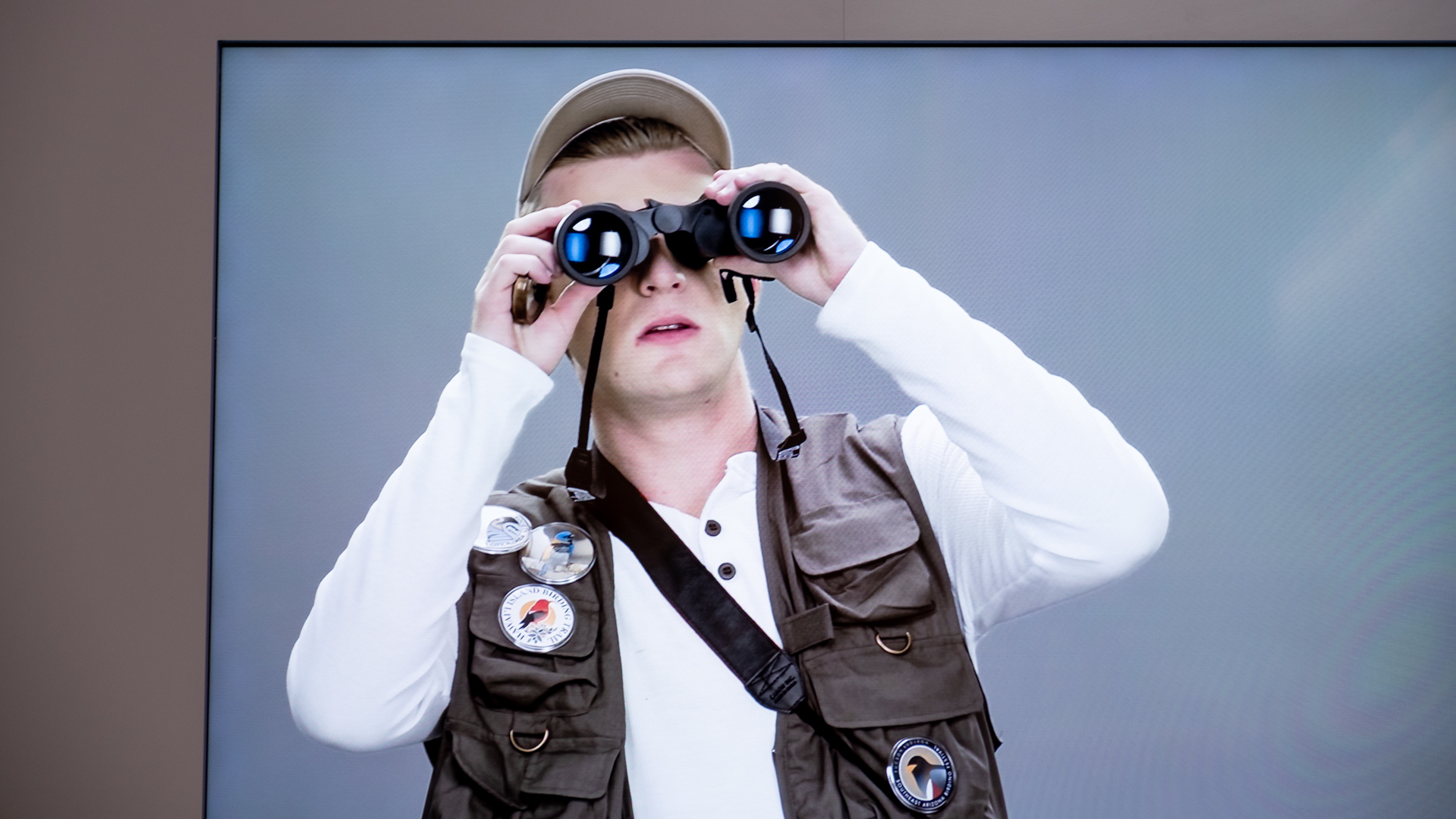Affiliate links on Android Authority may earn us a commission. Learn more.
The Neon 'artificial human' presentation at CES 2020 was a trainwreck

Over the past few months, hype has been building for a Samsung-backed company known as Neon. Although Neon doesn’t have a product, per se, there was still a Neon CES 2020 presentation designed to formally announce the company’s ambition: to create “artificial humans” that seem completely real.
Early press materials suggested Neon had created AI-powered facsimiles of humans with which you could communicate in a natural way. Images of these Neons, as they are called, came along with a mysterious and alluring slogan: “Have you ever met an artificial?”
Today, I and many of my colleagues in tech journalism gathered at the Neon CES 2020 event to get our first glimpse at what could be a game-changing new frontier in artificial intelligence. However, what we saw wasn’t like a sci-fi film come to life, but rather a poorly-executed pitch of an idea that doesn’t at all match the hype.
The build-up to explain Neon

Neons are the brainchildren of CEO Pranav Mistry, who led the CES event. Mistry is a scientist and inventor with a background in augmented reality, wearable computing, artificial intelligence, machine vision, and robotics.
Right off the bat, the Neon CES presentation started with a few hiccups. Apparently, there were some technical difficulties with the system showing the different Neons. This kind of thing happens all the time during presentations such as this, so it wasn’t a big deal. However, once the event officially got started, it became clear that the technical issues were the least of Neon’s problems.
Within a minute, there were some audible groans in the audience when a presentation slide appeared showing a periodic table and focusing on the element of neon. More groans ensued when Mistry took the time to point out that neon glows red which, as far as I can tell, has literally nothing to do with Neons, AI, or anything else.
Continuing on, there was an explainer about what needs to happen for humans to “feel” like a Neon is also human. According to Neon, that feeling requires the three Rs: Reality, Realtime, and Responsive. The Reality aspect simply refers to a Neon looking and sounding human in physical appearance, mannerisms, speech, etc. The Realtime aspect is pretty self-explanatory, and the Responsive aspect refers to Neons having the ability to respond to your communication in about the same amount of time — and in the same way — as another human would.
Achieving that kind of realism isn’t easy and Neon set some lofty goals by starting the presentation in this way. But the press release and the wall of TVs showing different “humans” seemingly ready to engage us in conversation made me hope that we were in for a wild ride.
The hype machine grinds to a screaming halt

Naturally, the attendees assumed that the follow up to the explanation of the three Rs would be a demonstration of how Neons can meet or even exceed them to become indistinguishable from humans.
That didn’t happen. It turns out that Neons are essentially a baby step above current “deep fake” technology. Despite all the hype, Neons are not indistinguishable from humans. In fact, all of the Neons are humans: they are each based on a real person who’s been scanned and photographed. Yes, a computer is recreating these humans in a digital fashion, but it didn’t create them from scratch. The team behind Neon simply gave a computer an existing person and the computer recreated them algorithmically. Impressive, sure, but not ground-breaking.
The Neon CES presentation moved forward with Mistry and a co-host showing how Neons can respond to stimuli. Once again, the hype machine for Neon led us to believe that we would see natural human-like responses from the Neons when you engage them in conversation. For example, a smile when you say something nice or a frown when you tell them you had a bad day.
We went in expecting a breakthrough in artificial intelligence. What we got is an elaborate video game character.
Instead, the presenters pressed buttons and moved sliders on a tablet to cause the Neon to do something. They’d raise the Neon’s eyebrows or hit the “laugh” button and the Neon would respond a few seconds later. I couldn’t help but think to myself that I did the same thing in 1985 when I hit the A button on my NES controller and made Mario jump on a Goomba. Sure, this Neon is much more impressive and more elaborate than a pixelated Mario, but the concept is exactly the same.
By this point, the audience understood that Neon wasn’t at all what it was hyped up to be. The crowd started thinning out. I stayed simply to see if Neon could save this immensely disappointing event in some way.
At first, it seemed like Neon might do just that.
Neon goes for a hail mary, falls flat

To the great pleasure of many members of the audience, the presentation started wrapping up. Surprisingly, Mistry referred to Neons as “not a product” and even admitted that Neon doesn’t have a strong business model. Interestingly, he tried to paint that as an advantage. “Not everything has to be about profit,” he said. This pleased me, and I thought that maybe he was attempting to create artificial humans just to do it, just to prove that we might be capable of doing it.
However, a presentation slide appeared not long after which made it very clear that the company is planning to integrate Neons with third-party business platforms. An example of Neon partnering with banks (banks!) to create virtual teller systems was even used. Mistry then said that Neon is looking for partners and talked a bit about his own success at MIT and Microsoft.
Somehow, the team at Neon thought jumping from “Neon isn’t about products and profits” to “here’s a pitch on how we intend to profit off Neon, please fund us” would be a good idea. A man next to me in the audience actually started laughing out loud at this point during the presentation.
It appears that Neon thought a press event at CES 2020 would be a good time to pitch for investment.
I don’t want to be a Negative Nancy here. Neon is a cool idea and shows a ton of promise, I will be the first to admit that. But Neon’s reach far exceeds its grasp at the moment, which makes one wonder why the company didn’t start with a small booth event that just showed off some ideas rather than this elaborate spectacle.
Ultimately, the thing that irked me the most about the entire Neon CES event was the fact that it seemed much more like a pitch for investment, despite the fact that the audience was full of journalists. None of us are going to invest in products here at the trade show, we’re just here to talk about the products. But even if we were going to make investments, there was no one in the audience impressed enough by what Neon had to show to make an investment anyway.
Later, at another demo of the Neon platform, we overheard a gentleman sum the whole thing up really well. He said, “Neon? More like Nee-yawn.” I couldn’t have said it better myself.